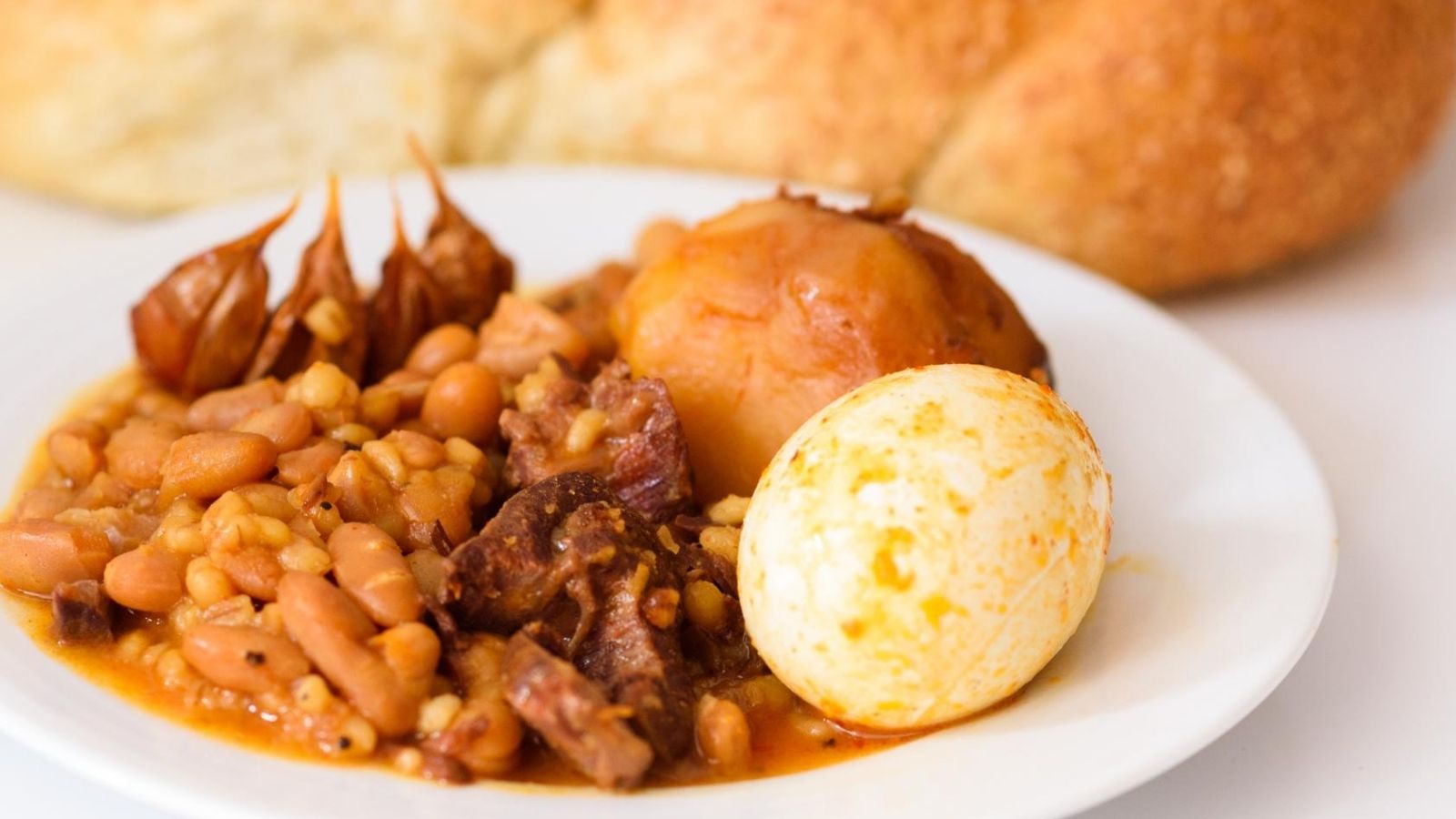Huevos haminados, eggs cooked slowly through the night, are one of the most recognizable foods of the Sephardic kitchen. But in fact, the uniquely Jewish cooking method long predates its popularity among the Jewish community in Spain. With the Spanish Expulsion of 1492, it spread widely to other Jewish communities while simultaneously remaining a hallmark of Sephardic cuisine.
The name huevos haminados (or just haminados for short) derives from Ladino, combining eggs with the name for the Shabbat stew in which they were cooked, hamin, the Sephardic precursor to what Ashkenazi Jews call cholent. Such eggs emerge from the pot brown in color, with a nutty and meaty flavor, along with a deliciously creamy yolk.
https://www.instagram.com/p/B8BytHIl9bD/
Inquisition trial records from both Spain and Mexico document the popularity of these eggs among crypto-Jews. In A Drizzle of Honey: The Lives and Recipes of Spain’s Secret Jews, David M. Gitlitz and Linda Kay Davidson highlight indictments that point to the “red eggs” some conversos ate alongside their “Jewish meat and Sabbath stew,” indicating they maintained a secret Jewish lifestyle. Haminados were thus recognized as a genuinely Jewish food item.
The Nosher celebrates the traditions and recipes that have brought Jews together for centuries. Donate today to keep The Nosher's stories and recipes accessible to all.
Despite their Sephardic association, haminados have ancestors that predate the Spanish Jewish community. In the Talmudic Tractate Shabbat we are told that Jews in the Galilean city of Tzippori left eggs heating on the Sabbath for long and slow cooking. In other parts of the Talmud, we find distinct terms to describe eggs that are roasted, boiled in water, stewed in other liquids, or cooked in ashes.
https://www.instagram.com/p/B7eHnOoH3FA/
The dry-heat method appears to have been the earliest way to long-cook eggs. Throughout history, in many places, Jews prepared their Shabbat eggs in this manner. Yemenite Jews roasted them in the oven next to their jachnun or kubaneh, Egyptian Jews buried them in the coals of the bathhouse fire, and in parts of Germany and Austria, some Ashkenazim placed eggs in a separate container alongside their cholent. Still today, many Iraqi Jews leave eggs to roast slowly on the lid of their pot of t’beet (a chicken-and-rice Shabbat dish).
https://www.instagram.com/p/B8vQTiIn3R7/
Technically, such eggs are called huevos asados — roasted eggs. But they developed directly into haminados in medieval Spain. Dry-roasted eggs shrink inside their shells, but by placing them inside the moist hamin, Sephardim got the same taste with a more pleasant texture.
Haminados became so beloved to Sephardic Jews that they began eating them at other times: Shabbat morning for desayuno (breakfast), Purim (due to the similar sound of hamin and the villainous Haman) or even at regular meals during the week. In order to eat them with dairy foods and still observe the kosher laws, one more development took place: the eggs emerged from the meaty hamin pot and were cooked in water by themselves. To maintain the classic look and flavor, many put onion skins or coffee grounds into the water. (Apparently, the brown color comes from the Maillard reaction, and develops even in plain water. But tradition runs strong, and perhaps these additives deepen the color beyond the chemical reaction alone.) The onion skin technique had already become common in 15th century Spain.
With their post-1492 spread, Sephardic Jews transferred haminados to their new homes all around the Mediterranean. Some regional names for them highlight their origins: “Jewish eggs” or “eggs of Salonica” (once a highly Jewish city). Furthermore, for around 1,000 years after the fall of the Roman Empire there were virtually no chickens (and thus no eggs) in Europe. So, while Ashkenazim already consumed lots of eggs by the 14th century, haminados were more strongly linked to Sephardim, who, in Muslim lands, had never stopped eating eggs in the first place.
Nowadays, Sephardic Jews have elevated these simple eggs, creating interesting designs by slightly cracking the shells after the initial boil, or even by pressing delicate leaves between the eggshells and a piece of panty hose! Israeli cookbooks feature tips such as using older eggs, which are easier to peel, and not bringing the eggs to a strong boil to avoid over-hardening.
Perhaps most notably, the eggs are now showing up in Ashkenazi cholent pots as well. In a world where one can learn any cooking style via the internet, and where Jews of different ethnic origins more frequently marry each other, taste trumps tradition and foods of Jews from different regions start blending together.
https://www.instagram.com/p/BUP7pY0hVCo/
This identifiably Sephardic egg reaches back to its pan-Jewish origins and now bridges the differences between disparate diasporic communities. Haminados remind us that Jews everywhere are part of a single great nation, and we have the food to prove it.



